Blog
Conversion Psychology
Conversion psychology is the science of understanding the decision-making process in the mind of the buyer.
Conversion psychology are the two most important words in the world of marketing
How traditional marketing looks at conversions
If you go to a typical product page you will find that the core emphasis is on displaying the features and benefits of that product.
The idea is that the user will visit the page, have a look at the listed features, confirm that they are the features he was looking for, then look at the benefits, and pull the trigger.
But this isn’t how shoppers actually behave.
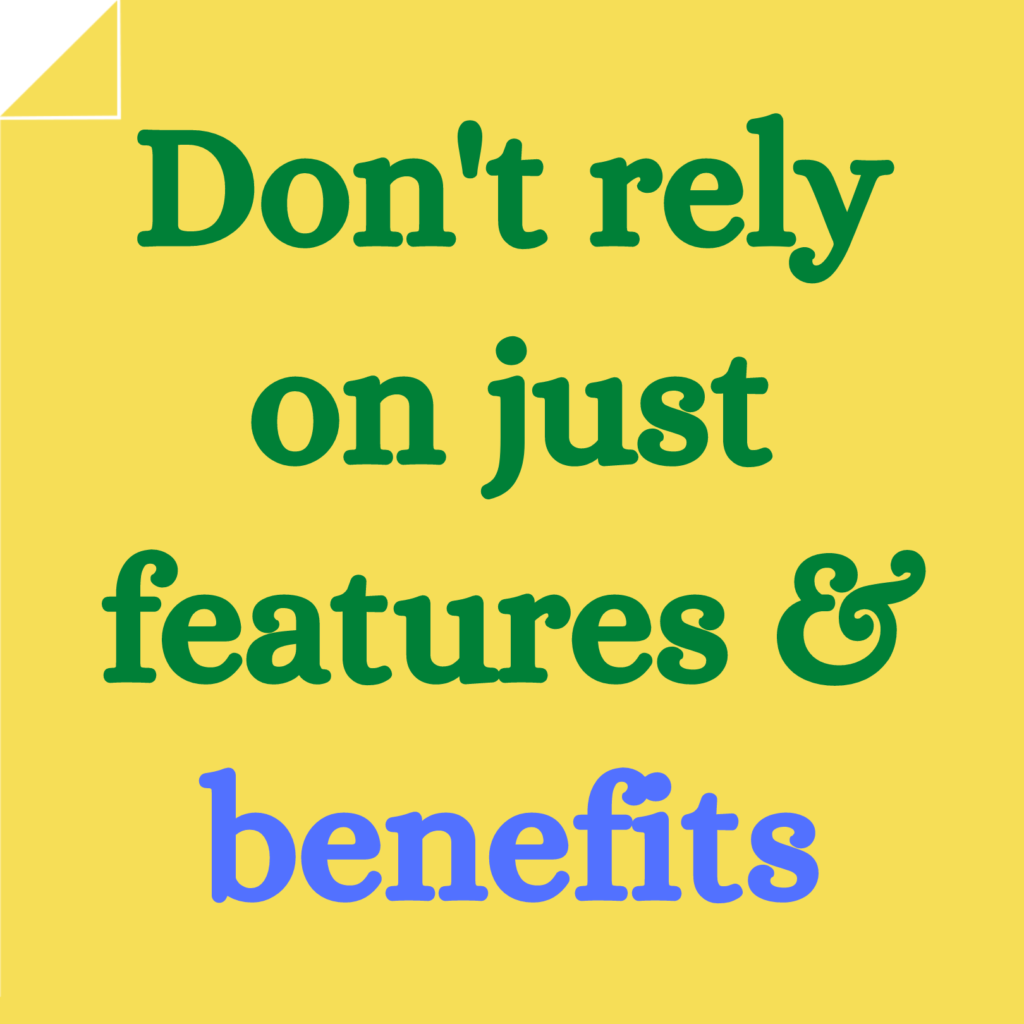
Often, the shopper has a very vague understanding of the problem they’re looking to solve.
They did a Google search for the problem or the potential solution. This reveals a list of advertisers who promise to have the solution.
The user opens a few promising links in new tabs to investigate each brand.
Users aren’t monoliths
If you have 100 users landing on your site via advertising it’s quite likely these users could be divided into multiple user buckets. With each bucket representing users with similar motivations and psychologies.
The psychographics of the bucket residents would be distinct. For some fear of not making the wrong purchase may be the core driving force. For others, the effectiveness of the purchase could be the key factor. There might also be a group that is drawn to expertise— they recognize they don’t possess knowledge about this topic and are looking for advice from an uber expert.
And it’s not like each bucket has just one psychology. Each bucket will have shared psychologies from other buckets but one dominant one.
Using a sales pitch that demonstrates uber expertise to the bucket whose primary motivation is value for money will not help conversions. You need to pair the sales pitch with the psychology of the shopper we are trying to influence. That pairing process is what makes conversion psychology so impactful.
Construction your sales pitch
The whole point of using conversion psychology is to improve conversion rates by understanding the psychology of the shopper. But in order to influence the psychology, the shopper needs to be delivered content— that content is your sales pitch.
Therefore, to generate high conversion rates using conversion psychology our sales pitch needs to be constructed in a very specific and deliberate way.
Opening
The first part of the sales pitch welcomes the prospect, lets them know our solution is the one for them, and starts building trust.
If the start isn’t strong it wouldn’t matter that the content on paragraph three is pure magic because most paid traffic will never reach that far. They will be turned off by the opening and leave.
Let’s look into why the start matters:
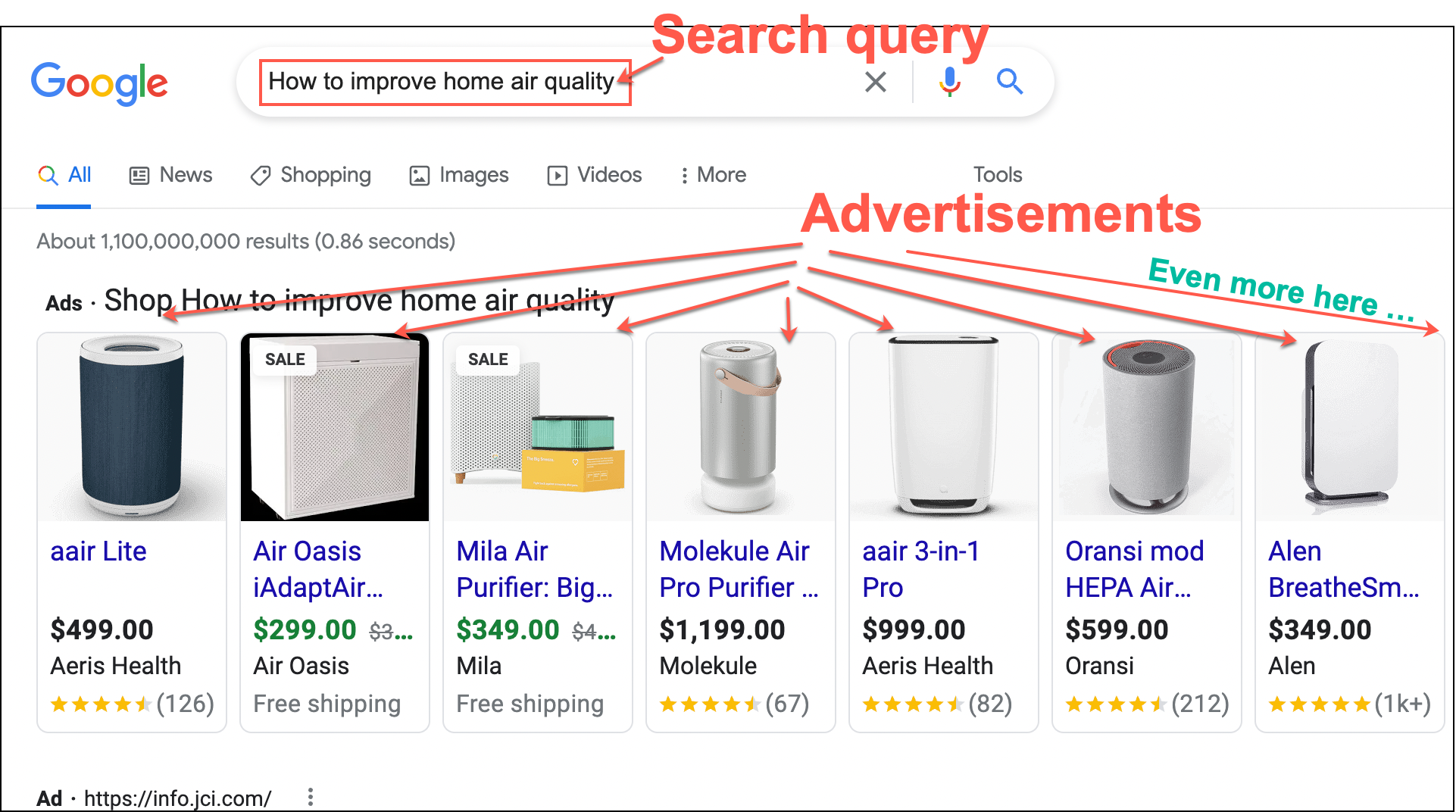
In the example above we Googled “How to improve home air quality” and saw a bunch of promising product advertisements. The shopper doesn’t know which air purifier is best for them so they right-click and open the most promising results in new tabs. Now they have four or five open tabs.
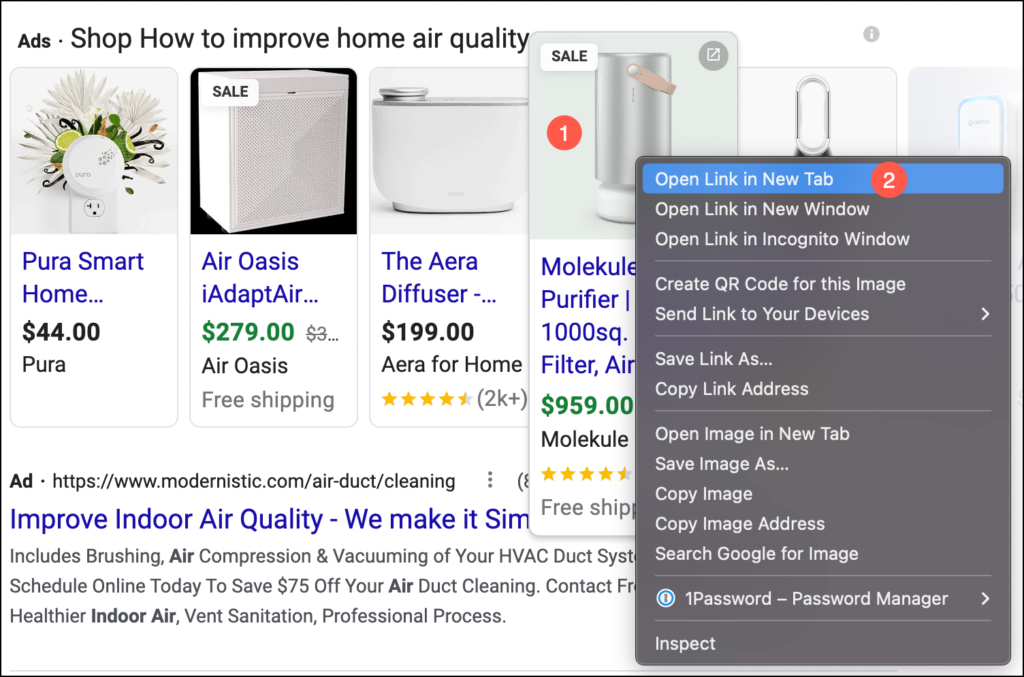
At this point, the shopper is in a promiscuous state of mind. If the content on the product page doesn’t quickly connect they’ll close the tab and visit the remaining open tabs.
When the visitor first lands my goal isn’t to get them to buy, that comes later. My first goal is to prevent them from bouncing:

To fix bounce the marketer needs to nail the opening of the opening.
In the Further Reading section, we’ve linked to an article that shows the actual copy you need to use in the opening of your sales pitch. The copy is written, you just have to copy-paste it to the top of your product description.
Now that we’ve fixed the opening of our opening we need to build a solid foundation.
At this point, there is no trust equity with this new visitor. Before we can start selling the shopper on our breakthrough product we need to help them get over the unfamiliarity barrier:
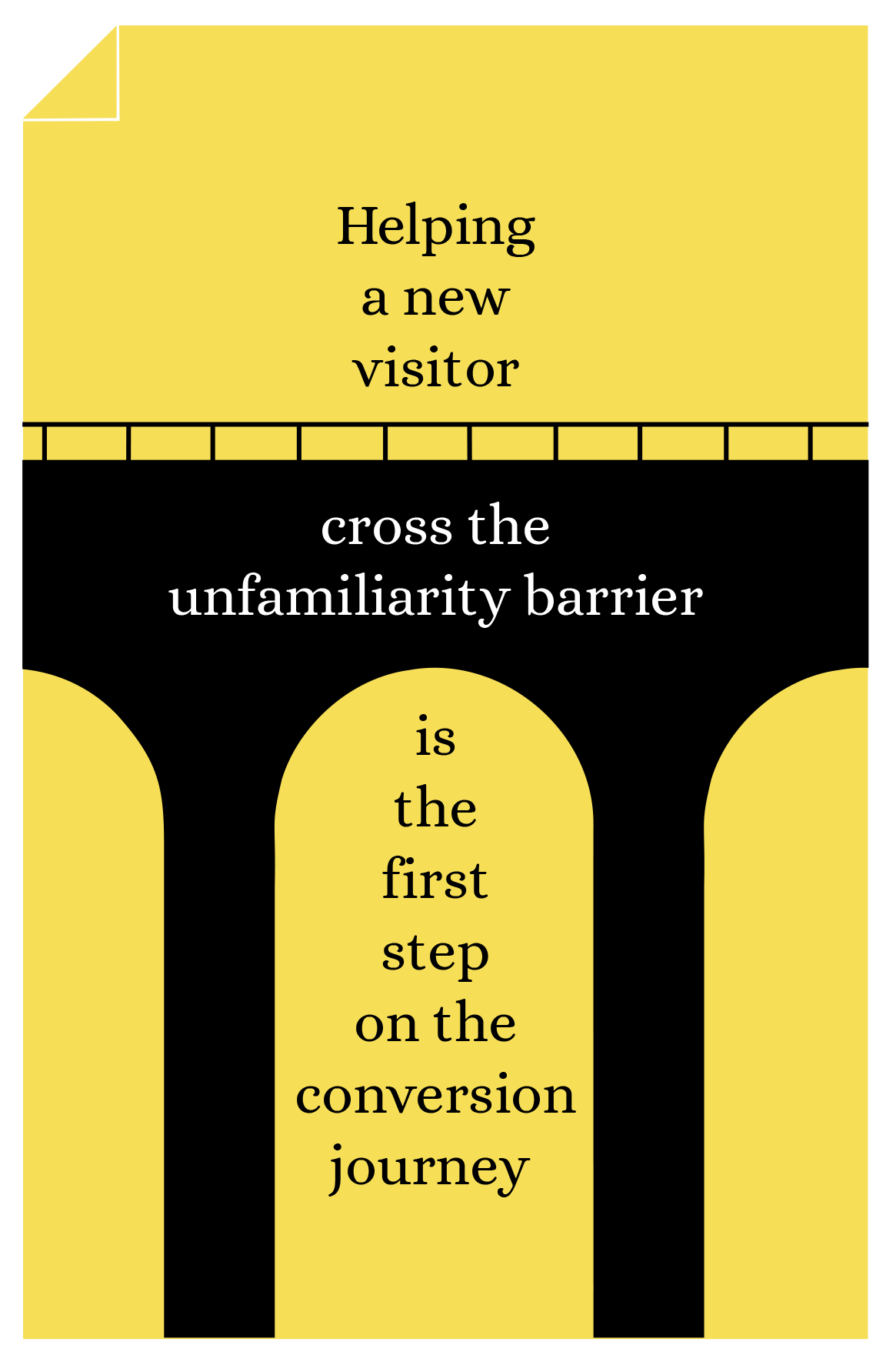
To get this new visitor over the unfamiliarity barrier we rely on the “why we exist” story. This is your origin story—about how seeing the light inspired you to lace up mountain climbing boots.
Details about crafting this story are in the Further Reading section below. Don’t worry, the rest of this article will make perfect sense even if you don’t know all the details for the “why we exist” story.
Let’s move on to the second part of the sales pitch.
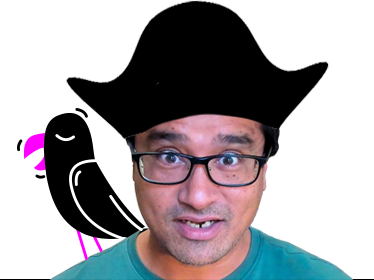
Since you're liking this article on how to optimize conversion rates you're gonna love the conversion ideas I share in my weekly newsletter. Signup below. If it isn't as good as I'm making it sound unsubscribe with one click.
Middle
The second part of the sales pitch is designed to introduce our creation interestingly and build a case for it. It gets into technical details, differentiates our product from competing solutions, addresses missing or inferior features.
This is where we’re really impressing the buyer with our knowledge about the problem they’re facing. This is where we present the visitor our “why this product must exist? story. The basic idea behind this story is to persuasively let the new visitor know that there is no product in the world (at this price point) that can deliver this degree of value.
Closing
As the reader is reading the sales pitch questions are forming in their minds. Guess what happens if the reader reaches the bottom of the pitch and still has unanswered questions? They’ll defer judgment. They will think, “I like this product and want to buy it but I have some questions that I didn’t see the answers for today, I’ll just come back later and pull the trigger.” But later doesn’t happen because life gets in the way.
To prevent this from happening the marketer needs to think of every potential concern and question.
I like to think of copywriting as a court case where the copywriter is playing the role of a lawyer and trying to convince a jury of 12.
To win the case (close the sale) we need to convince each jury member.

We can’t lie or bend the truth. If the judge even gets a whiff of that she’ll throw out the case. But we can make the truth interesting. So that’s what the copywriter does.
What we’ve shown above is the structure of the three-act sales pitch (product story).
Our basic idea is this— by the time the shopper reaches the bottom of our sales pitch we want her to have absorbed and built harmony with the most important aspects of our sales pitch. That’s it.
Was this section about the three acts of a sales pitch clear? /
Thank you for your feedback. You are the best.
Give me your email address and I’ll do my best to properly explain my idea.
Thanks, I'll be in touch soon.
Using conversion psychology to craft your sales pitch
Now that we have the three-part structure of our sales pitch we need to create content for each section. We know what result we need from each section but how should we write that content using conversion psychology for maximum impact? For that your need our conversion copywriting checklist. Explained below.
Psychology is a vast and complicated field. We may never understand all the happenings of the mind. But we can pick very specific slices of that decision-making process and map them with a high degree of accuracy.
The small slice we’ve worked on for the last 13 years is— conversion psychology for first-time buyers.
It turns out that when a consumer is buying something for the first time (irrespective of what is being bought) they use a very specific mental checklist. Through rigorous experimentation nine checklist elements have been discovered:
- People are skeptical of “too good to be true”
- They find expertise sexy
- They root for people who beat the odds
- They are fascinated by surprising details
- They are visual animals
- They need motivation to break habits
- They love personalized experiences
- They like knowing they’ve stumbled onto something rare
- We must resolve their negative thoughts
We will not cover these in this article but when you get to the Further Reading section below.
FURTHER READING
We hope you enjoyed this article that talked about what a picture story is and how to use it to maximize conversion rates.
We’ve spent the last 13 years in our marketing lab, experimenting with ways to optimize conversion rates and grow sales. If you’re interested we’d like to share our key insights:
— The most important page on your site is the product page. Why is that and why focus on product pages?
— On the product page (also called PDP) the most important element is the product description. This is where we present our product sales pitch (also called product story). This product story presentation needs to be perfect. We have just one chance to convert this visitor (only 15% of visitors ever return). Learn how to construct the perfect product story.
— The opening of your product description really matters. We call it the art of the start and you can learn more about it in this article: The Art of The Start.
— The Myth of the Perfect Product Page
— Once the basic product story has been developed it needs to be reframed to influence the psychology of the buyer you are trying to convince. Everyday shoppers encounter an incredible number of ads. As a result, they rely on a mental checklist to decide if they should consider a brand, or not. We’ve identified these 9 checklist items and developed a conversion copywriting process. To learn more (and see examples) visit our most important article: Conversion Copywriting: How to Craft a Product Story That Converts.
ABOUT FRICTIONLESS COMMERCE
We deliver an unfair advantage to technical product DTC brands by improving their advertising effectiveness by 20% in 90 days. Our secret? A buyer psychology copywriting framework. The process.
If you like doing the hard work yourself, our founder Rishi shares conversion ideas on LinkedIn every day. Connect with him here.
If you want to make your life easier and still increase conversions, jump on a call.



